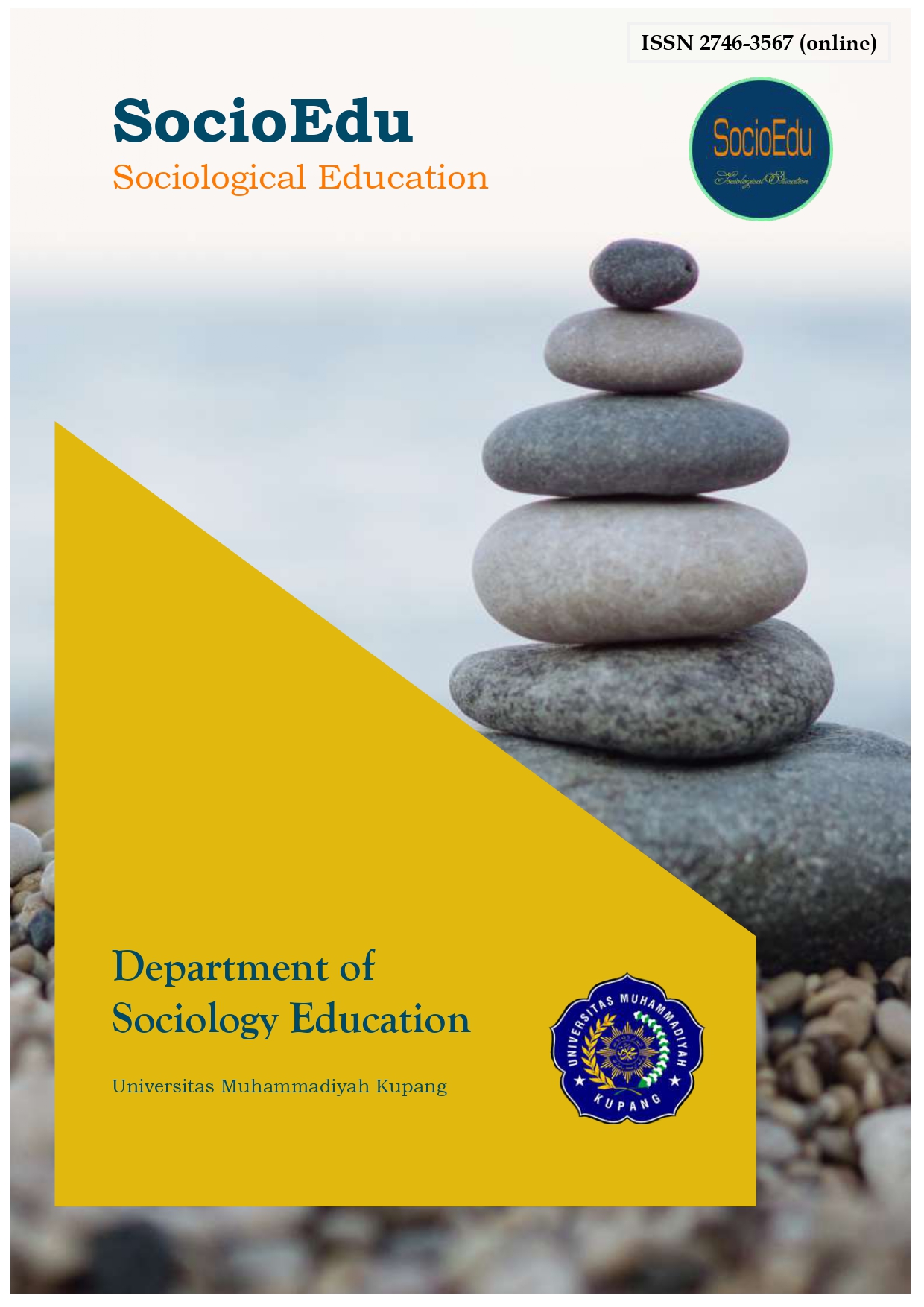Main Article Content
Abstract
The Bugis people have a social stratification system that is inherited from generation to generation, where a person's social status is determined more by genealogical factors compared to the accumulation of material wealth. This study aims to analyse the relationship between descent and social status in the Bugis community and explore how gold jewellery functions as a symbol of prestige for women. This study uses a qualitative approach with data collection techniques including in-depth interviews, observations, and documentation in Wajo Regency, South Sulawesi. This study applies triangulation techniques by combining in-depth interviews, observations, and documentation, as well as time triangulation, to avoid temporal bias. Data analysis uses the Miles and Huberman approach through three main stages: data reduction, data presentation, and conclusion drawing and verification. The results of the study show that in the Bugis community, the social stratification system is still based on lineage, while gold functions more as a status symbol for those who already have a certain social position, rather than as a tool of social mobility. The symbolism of gold jewellery is subject to established social structures, so the prestige gained through gold is not strong enough to shift the social stratification that has been inherited.
Keywords
Article Details

This work is licensed under a Creative Commons Attribution 4.0 International License.
References
- Basri, R., & Fikri, F. (2018). Sompa and dui menre in wedding traditions of Bugis socie-ty. IBDA` : Jurnal Kajian Islam Dan Bu-daya, 16(1). https://doi.org/10.24090/ibda.v16i1.1101
- Bourdieu, P. (1986). The Forms of Capital. In J. G. Richardson (Ed.), Handbook of Theory and Research for the Sociology of Educa-tion (pp. 241258). Greenwood Press.
- Bourdieu, P. (2010). Distinction: A social cri-tique of the judgement of taste. Routledge.
- Caldwell, I., & Wellen, K. (2016). Family mat-ters: Bugis genealogies and their contribu-tion to austronesian studies. International Journal of Asia Pacific Studies, 12(Suppl. 1), 119141. https://doi.org/10.21315/ijaps2016.12.s1.6
- Clark, G. (1986). Symbols of Excellence: Pre-cious Materials as Expressions of Status. Cambridge University Press.
- De Nardi, M. (2004). Wealth inequality and in-tergenerational links. The Review of Eco-nomic Studies, 71(3), 743768. https://doi.org/10.1111/j.1467-937X.2004.00302.x
- Henley, D., & Caldwell, I. (2008). Kings and convenants. Indonesia and the Malay World, 36(105), 269291. https://doi.org/10.1080/13639810802268031
- Jumiyati, Abd. Hakim, Anwar, W. A., Wahyu, A. R. M., & Putri Kurniati. (2024). Mene-lusuri tradisi tukar cincin dalam mappetu-ada: Implikasi maqasidh al-syariah terhadap keluarga dan masyarakat. Jurnal Al-Qadau: Peradilan Dan Hukum Keluarga Islam, 11(2), 166180. https://doi.org/10.24252/al-qadau.v11i2.51772
- Korom, P. (2022). The deserving or undeserving rich? New survey evidence on multimil-lionaire households in Europe. SN Social Sciences, 3(1), 8. https://doi.org/10.1007/s43545-022-00593-4
- Latief, M. C. (2016). Komunikasi beda gender dalam masyarakat bugis di desa kemujan kepulauan karimunjawa. Jurnal The Mes-senger, 8(2), 1. https://doi.org/10.26623/themessenger.v8i2.344
- Miles, M. B., & Huberman, A. M. (2014). Qualitative data analysis: a methods sourcebook. Sage Publications.
- Millar, S. B. (1983). On interpreting gender in Bugis society. American Ethnologist, 10(3), 477493. https://doi.org/10.1525/ae.1983.10.3.02a00050
- Mukhlish P, Poelinggoman, E., Kallo, A. M., Sulistio, B., Thosibo, A., & Maryam, A. (1995). Sejarah kebudayaan sulawesi. De-partemen Pendidikan dan Kebudayaan.
- Ramli, U., & Basri, L. (2021). Peran gender pa-da masyarakat bugis. Jurnal Noken, 7(1), 7889.
- Rosmita. (2022). Prosesi penetapan mahar dalam adat pernikahan suku bugis (Studi kasus: daerah tangkit baru). JAMBE: Jurnal Se-jarah Peradaban Islam, 2, 2739.
- Satria, A. S. (2016). Sikap ibu rumah tangga terhadap emas di kecamatan Kutoarjo. Ek-sis: Jurnal Riset Ekonomi Dan Bisnis, 11(1), 121. https://doi.org/10.26533/eksis.v11i1.25
- Spyer, P. (2000). The Memory of Trade: Mo-dernitys Entanglements on an Eastern In-donesian Island. Duke University Press.
- Weber, M. (1978). Economy and society: An outline of interpretive sociology (G. Roth & C. Wittich, Ed.). University of California Press.
- Yulindasari, A., Mengge, B., & Syam, R. (2024). Flexing sebagai habitus: Analisis praktik sosial perempuan bugis di kecama-tan maritengngae, kabupaten sidrap. SABA-NA: Jurnal Sosiologi, Antropologi, Dan Budaya Nusantara, 3(2), 187198. https://doi.org/10.55123/sabana.v3i2.4128
- Yunus, P. P. (2012). Makna simbolbentuk dan seni hias pada rumah bugis sulawesi se-latan. Jurnal Seni & Budaya Panggung, 22(3), 225250.
- Yusriadi, Y., Zulfiqar Bin Tahir, S., Farida, U., Sakkir, G., & Akbar, Z. (2019). Communi-ty perception in the use of Songkok Recca. Anthropos: Jurnal Antropologi Sosial Dan Budaya, 5(1), 3139. https://doi.org/10.24114/antro.v5i1.13165
- Zelizer, V. (2021). The social meaning of mon-ey: Pin money, paychecks, poor relief, and other currencies. Princeton University Press.
